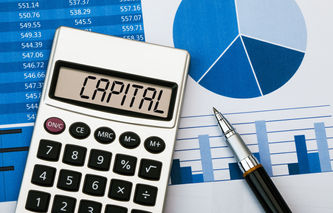The term cost of preferred stock refers to a calculation that allows the investor-analyst to understand how expensive it is for a company to issue preferred stock. The cost of preferred stock is also one of three metrics used to calculate a company's cost of capital.
Identifying the Cost of Preferred Stock
Cost of Preferred Stock = Interest Expense on Preferred Stock / Total Preferred Stock
Where:
The interest expense in this metric only includes the expense associated with payments on preferred stock (typically in the form of dividends), not interest expense on debt. Interest paid on preferred stock is not tax-deductible, so it’s not adjusted for income taxes. (A company's interest expense on debt is multiplied by 1 - the company's incremental tax rate to account for its tax deductibility.)
The denominator of this calculation includes the total value of all preferred shares issued to the public.
Market performance measures allow the investor-analyst to understand the company's ability to achieve its high-level business profitability objectives. This is usually assessed by examining metrics such as insider transactions, capture ratios, enterprise value, capitalization rates, and price-to-earnings ratios.
Market performance metrics provide analysts with a way to determine if a company is going to successfully execute its business plan. One of the ways to determine how expensive it is to provide a return to holders of preferred stock is by calculating the cost of preferred stock.
While the investor-analyst may be interested in a company's cost to provide holders of preferred shares with their dividends, the cost of preferred stock is also one of three components used when calculating a company's cost of capital. This later measure is important since new investment decisions should produce results that generate returns greater than the company's cost of capital.
The cost of preferred stock is calculated by dividing the interest paid on preferred shares (a dividend payment) by the total value of preferred shares held by investors. Multiplying this value by 100 allows the analyst to express the number as a percentage.
Example
The CFO of Company ABC is concerned the return on new investments is not being challenged and may be lower than the company's cost of capital. Much to their surprise, the company hadn't even calculated its cost of capital in recent years. After calculating the company's cost of debt (3.15%), the CFO asked their analytical team to begin the process of calculating the company's cost of preferred stock.
The team pulled information from both the company's balance sheet (preferred stock will be found as part of capital stock, which is reported in the stockholders' equity section of the balance sheet) as well as information on the payment of preferred dividends from its income statement.
They found that last year's preferred dividends amounted to $468,000, while the total value of the preferred stock was reported at $16,125,000. From this information, the cost of preferred stock was calculated as $468,000 / $16,125,000, or 0.0290.
The team has now found the cost of debt to be 3.15% and the cost of preferred stock to be 2.90%, the final step to determine the company's cost of capital is to calculate the cost of common stock.
Considerations When Determining the Value of a Preferred Stock
Investing in a preferred stock can be an attractive option for investors seeking a balance between the stability of fixed-income securities and the potential for higher returns. However, like any other investment, there are certain risks and considerations that investors should keep in mind when investing in preferred stocks.
In addition to evaluating them using various valuation models, investors need to consider the following factors when determining the values of preferred stocks:
Interest rate sensitivity – Preferred stocks, like bonds, are sensitive to changes in interest rates. When interest rates rise, the fixed dividend payments offered by preferred stocks may become less attractive than other investment options, potentially decreasing their value. Conversely, falling interest rates can increase the value of preferred stocks as their fixed dividends become relatively more attractive.
Voting rights – Preferred stockholders typically have limited or no voting rights in the company's decision-making processes. Unlike common stockholders who have voting power, preferred stockholders have a more passive role in corporate governance matters.
Dividend stability – Preferred stock dividends can be cut if the issuing company faces financial difficulties or fails to generate sufficient earnings to cover the dividend obligations. Assessing the company's financial health, earnings stability, and dividend payment history can provide insights into the stability of dividends.
Call provision – Some preferred stocks include call provisions that allow the issuer to redeem the shares at a predetermined price and time. This introduces the risk that the preferred stock may be called, potentially leading to an early termination of dividend payments.
It is important to remember that while historical data and valuation models can provide valuable insights, the future performance of preferred stocks is inherently uncertain.



